007. Sarah Zapata
Weaving Identity and Activism: Sarah Zapata’s Tapestry of Queer, Cultural, and Spiritual Narratives
Introduction
Sarah Zapata is a queer, New York-based textile artist and writer whose work explores themes of identity, feminism, nature, and the future. She expresses these ideas and explores her own identity through richly textured fibers, bold colors, and diverse materials, including those recycled or discarded. Sarah uses traditional weaving methods, as well as coiling, tufting, embroidery and sewing techniques inspired by her Peruvian heritage.
“I was born in Texas but I'm half Peruvian. I started getting really interested in textiles because I wanted to know more about my relationship to this culture. Peru has such a rich history of textile-making in so many capacities, and my grandfather was a textile salesman in Northern Peru…I want to talk about these two histories--the United Stares and Peru--and how I relate to them as a woman.”
— Sarah Zapata
Her work establishes a living thread to a textile world that has historically been feminine. Like the communities of women weavers, artists and designers before her who were relegated to the loom, she has found a powerful language in textile art. Her installations invite viewers to awaken and embrace sensations, not all of them comfortable.
"It's a matter of being comforting at first to take you to a deeper place as well…I don't like art that is so theoretical and conceptual that people can't understand the discourse. "
— Sarah Zapata
Sarah's artistic practice draws directly from her identity as a lesbian and first-generation American raised in a Christian home. She creates her work on a large loom, weaving Peruvian textiles that reflect her diverse cultural background. As a first-generation American artist today, she has the freedom to express her personal experiences rather than represent entire communities — incorporating elements of her heritage, upbringing, and contemporary postcolonial American culture.

Sarah often draws inspiration from Bible verses to title her works, infusing them with layers of spiritual and cultural significance. By referencing scripture, she engages in a subtle dialogue with the religious traditions she grew up with, reclaiming and recontextualizing these texts through the lens of her identity as a queer Latina artist. This practice allows her to challenge conventional interpretations of faith and morality, creating space for inclusivity and personal meaning within a historically rigid framework.
Early Life and Background
Cultural and Personal Influences
Sarah Zapata was born in Corpus Christi, Texas in 1988. As a first-generation Peruvian-American, it was a pivotal cross-country move in 2011 that provided her with a fresh perspective on what it means to be American. Following Donald Trump’s 2016 presidential victory, and the subsequent galvanization of anti-immigrant sentiments, Sarah took to thinking about how her work could be used to examine the current political context in which she found herself.
“Being from Texas and moving to New York 13 years ago gives me a different perspective on America. Also being first generation born here in my family, and understanding those implications and privileges.”
— Sarah Zapata
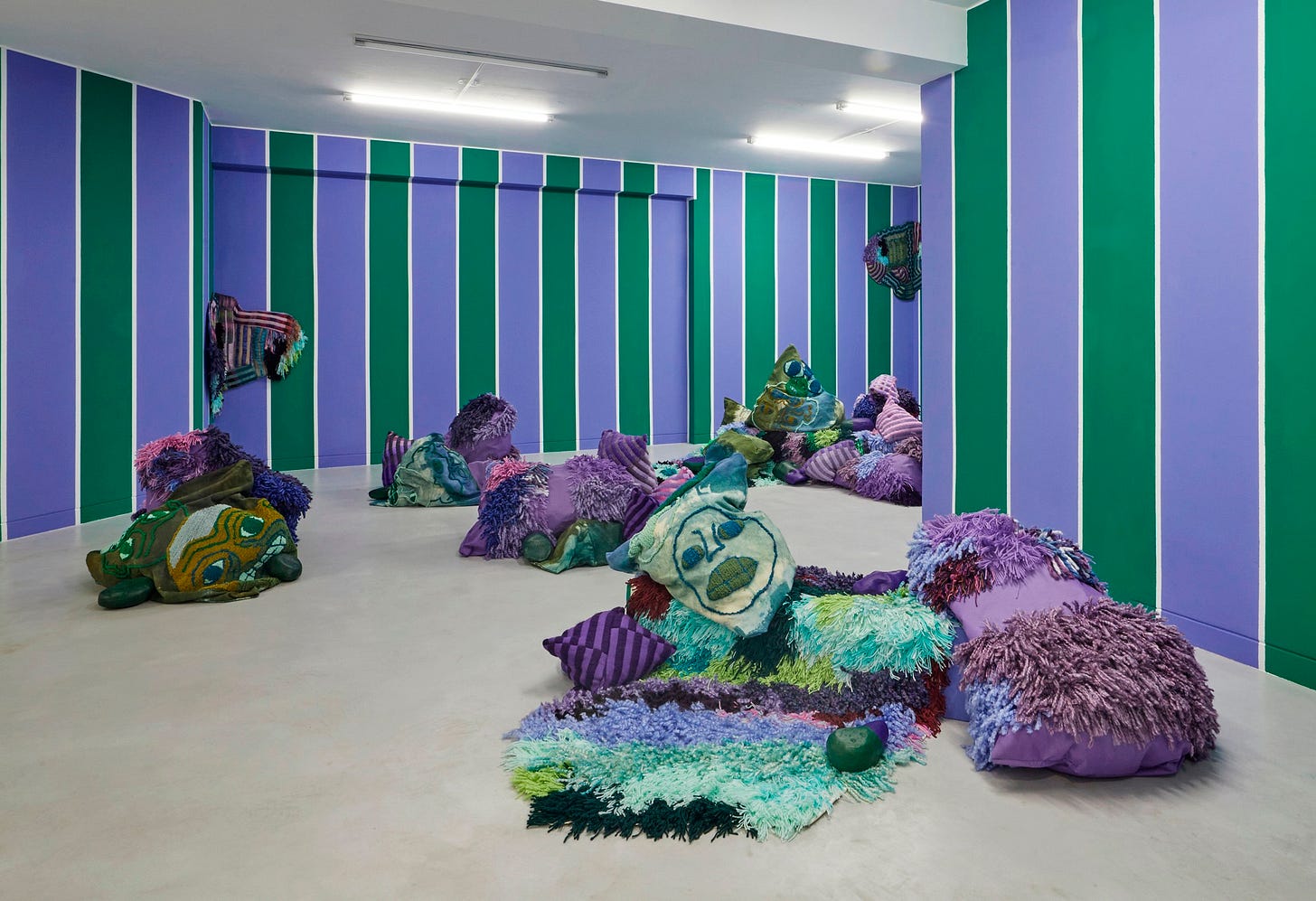
Sarah's work is deeply influenced by her Peruvian heritage and her experiences growing up in a multicultural environment. The traditional Peruvian textiles she encountered during her childhood, such as alpaca rugs and blankets, have significantly informed her artistic practice. These cultural artifacts serve as both inspiration and a means of exploring her identity, allowing her to connect with her roots while addressing contemporary issues.
“My father, as a Peruvian, was an important connection. We grew up with alpaca rugs, blankets and other textiles; I always knew they represented a part of my family and myself, but I didn’t know they would be the beginning of my professional research.”
— Sarah Zapata
In addition to her cultural heritage, Sarah's personal experiences as a queer woman raised in an evangelical Christian household have profoundly shaped her work. Her art often addresses themes of identity, gender, and sexuality, reflecting her journey of self-discovery and acceptance. By incorporating elements from her personal narrative, Sarah creates pieces that resonate with a broad audience, inviting viewers to reflect on their own identities and experiences.
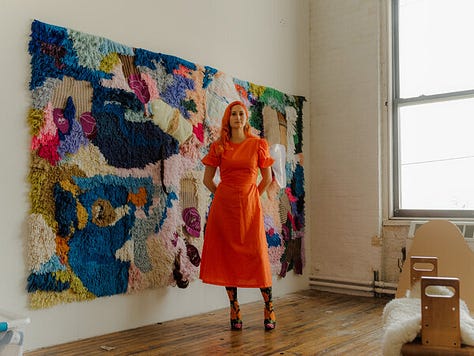

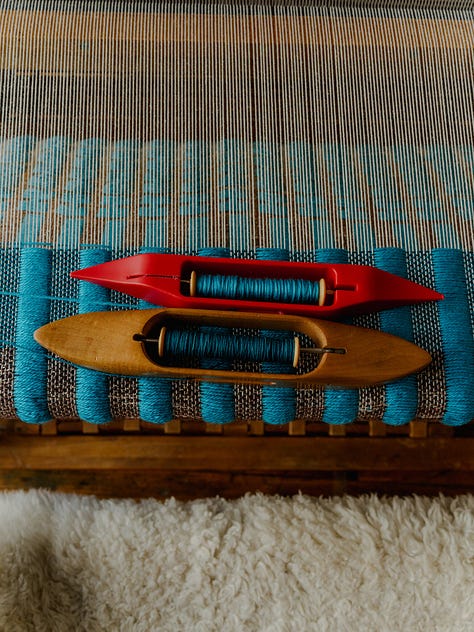
Early Exposure to Art and Education
Sarah received her BFA in Studio Art – Fibers from the University of North Texas in 2011.
“I initially started out with fashion design, but that only lasted a semester. I took my first weaving class and loved it, leading me to switch to the fibers program. My mother is an opera-trained singer and piano teacher, and my sister is a classical pianist, so being at the loom felt like being at the piano in this weird way. Weaving is basically just engineering, and my father is an engineer. I felt a connection to these things but on my own terms.”
…
“What initially attracted me to cloth was being a kid. I hated being a kid and how you could control so little in your life. Clothing felt like the one thing where I could control how my body moved through space. I started going to thrift stores in the seventh grade and deconstructing clothes, painting and hot gluing them because I didn't know how to sew. Having that agency of my body felt really incredible, so it seemed natural for me to gravitate towards fashion design. What started out as individuality I quickly understood as a commodification rather, so changing to fibers was a way to think more about the body and space.”— Sarah Zapata, interview with Fabiola Talavera of OBRA Magazine
Below is a video of Sarah working on a piece using the loom seen from the above photos. Video by Ricardo Nagaoka.
Sarah’s first brush with abstraction occurred when, as a child, she saw Dorothea Tanning’s large-scale sculpture Pincushion to Serve as Fetish (1979) at the Dallas Museum of Art. She loved how the fabric piece exuded softness and sensuality, challenging the building’s rigid concrete walls. Today, in her own practice, Sarah considers the assortment of handmade dolls from Peru and Mexico that occupied her childhood home. She viewed these fabric objects as “figurative, open-ended, and yet deeply precious.”
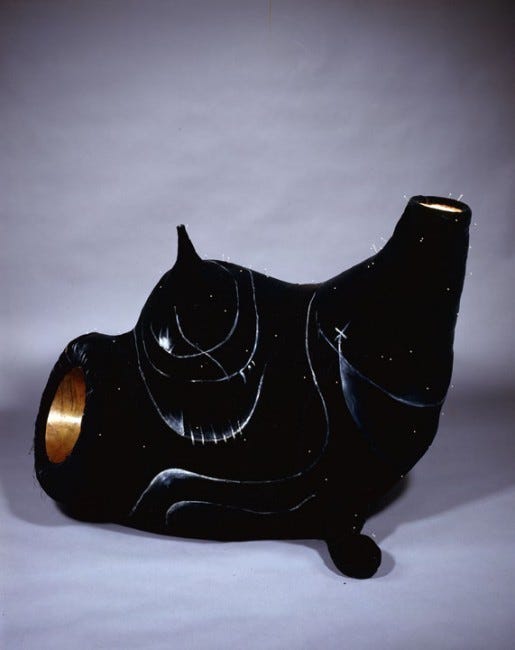
Key Influences
Sarah’s work is informed by the Paracas and Nazca cultures in Peru, which produced textiles for every stage of life, then buried the dead in their accumulated textiles.
“How could something be for the body and about the body that is not a garment?” Sarah states. This is the question at the heart of her work, which honors these ancient traditions with abstract references. Like Guadalupe Maravilla and Cecilia Vicuña, whom Sarah cites as models for her work, she weaves communal care and accountability into her textiles.
“Traditional textiles are current and immensely important. We can see them as inspiration, but also as documents.”
— Sarah Zapata
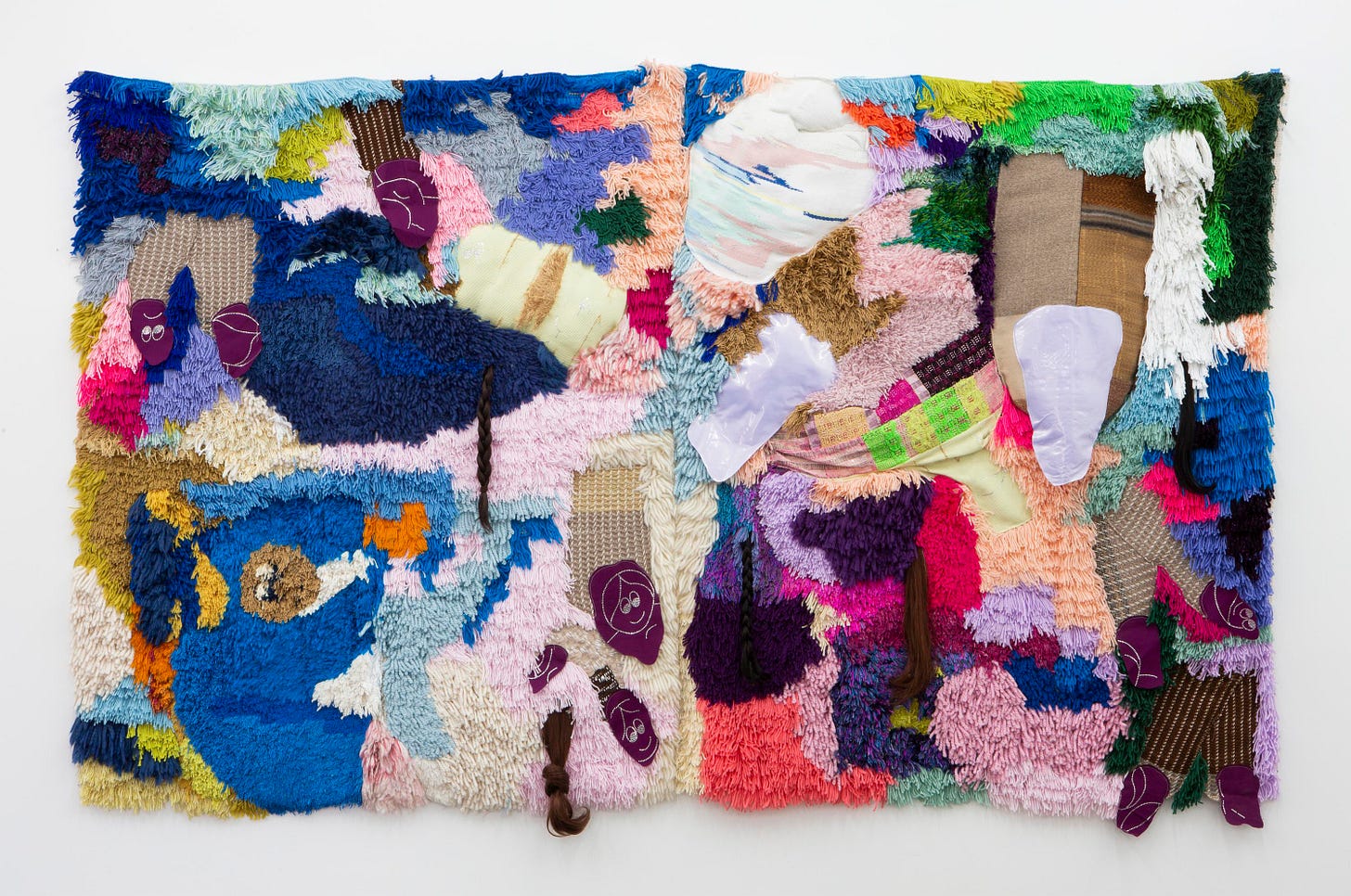
Sarah’s work even takes on an architectural role, often in the form of deconstructing power structures, but also through religious motifs and fortress-like constructions:
“I think of architecture in the way it directs a body to move through space. In school I was interested in the architecture of mental institutions, and the work of Thomas Kirkbride, who had envisioned mental asylums to be beautiful spaces. He believed beauty is therapeutic. I was interested in the functionality of beauty and how a space dictates so much of what we feel, how we exist and take up space. Architecture is large, grand. I think it’s important to show up unapologetically within a space.”
— Sarah Zapata, interview with Fabiola Talavera of OBRA Magazine
The vibrant colors and intricate patterns of traditional Peruvian textiles have profoundly influenced Sarah's aesthetic sensibilities. By studying these cultural artifacts, she has developed a deep appreciation for the craftsmanship and symbolism inherent in textile arts. This appreciation is evident in her use of bold hues and complex designs, which pay homage to her heritage while conveying contemporary themes.
Sarah's work is also informed by her academic background in fibers and her exposure to feminist art movements. The emphasis on process, materiality, and the subversion of traditional gender roles within these movements resonates with her own artistic practice. By integrating these influences, Sarah creates works that challenge conventional perceptions of textile art and highlight its potential as a medium for social commentary.
Art + Identity
Sarah approaches identity as a fluid and evolving concept, one that reflects her experiences as a queer woman of Peruvian descent. Her textile-based installations serve as physical manifestations of her journey, blending cultural traditions with contemporary narratives. Sarah’s practice underscores the power of fiber arts to challenge preconceived notions about art, gender, and heritage. By embracing the domestic associations of textiles, she reshapes their meaning, asserting them as tools of cultural affirmation.
“That’s why I like to occupy as much space as possible. Because many women before me couldn’t.”
— Sarah Zapata
Central to Sarah’s exploration of identity is the tension between conformity and individuality. Her works often play with dualities—past and present, public and private, traditional and modern—mirroring the complexities of existing within intersecting identities. The deliberate imperfections and bold textures in her pieces reflect the challenges and triumphs of self-discovery. Through this approach, Sarah creates a dialogue about the importance of owning and celebrating one’s full identity.
“I love the term, "Performativity." I think it's something that, as women, we have to think about and especially as a lesbian. It's like women are everything in my life. As much as I can, I want to showcase that, overly.”
— Sarah Zapata, interview with OUT Magazine (2017)
Her art transcends personal experience, inviting audiences to engage with broader questions of belonging and representation. Sarah’s pieces are not just decorative; they are deeply intentional, demanding viewers to confront the societal structures that shape their understanding of identity. Each piece becomes a tactile representation of her journey, serving as both a celebration of individuality and a call for greater inclusivity. By weaving together her personal history with universal themes, she fosters empathy and connection, making her art a space for reflection and transformation.
Art + Activism
For Sarah, art is a powerful vehicle for activism. Her works confront issues of cultural erasure, gender inequality, and queer invisibility, using the traditionally undervalued medium of textiles to make bold statements. Sarah often addresses the marginalization of craft within the art world, reclaiming fiber arts as a legitimate and impactful form of expression.
“We as queer people are never to settle for the pleasures of here and now; rather, we are constantly working toward a new reality. That’s why I’m so attracted to working in installations: They employ the use of fantasy. I want to create these otherworldly experiences for the viewer to access ideas of potential and futurity.”
— Sarah Zapata

Through her installations, Sarah challenges patriarchal norms and questions societal expectations of labor, particularly in relation to women and marginalized communities. The use of fiber—a material historically associated with domesticity—allows her to subvert these associations and transform them into symbols of resistance and empowerment. Her art becomes a rallying cry for visibility and inclusivity, advocating for a world that celebrates diversity in all its forms.
Keep reading with a 7-day free trial
Subscribe to Pride Palette to keep reading this post and get 7 days of free access to the full post archives.






